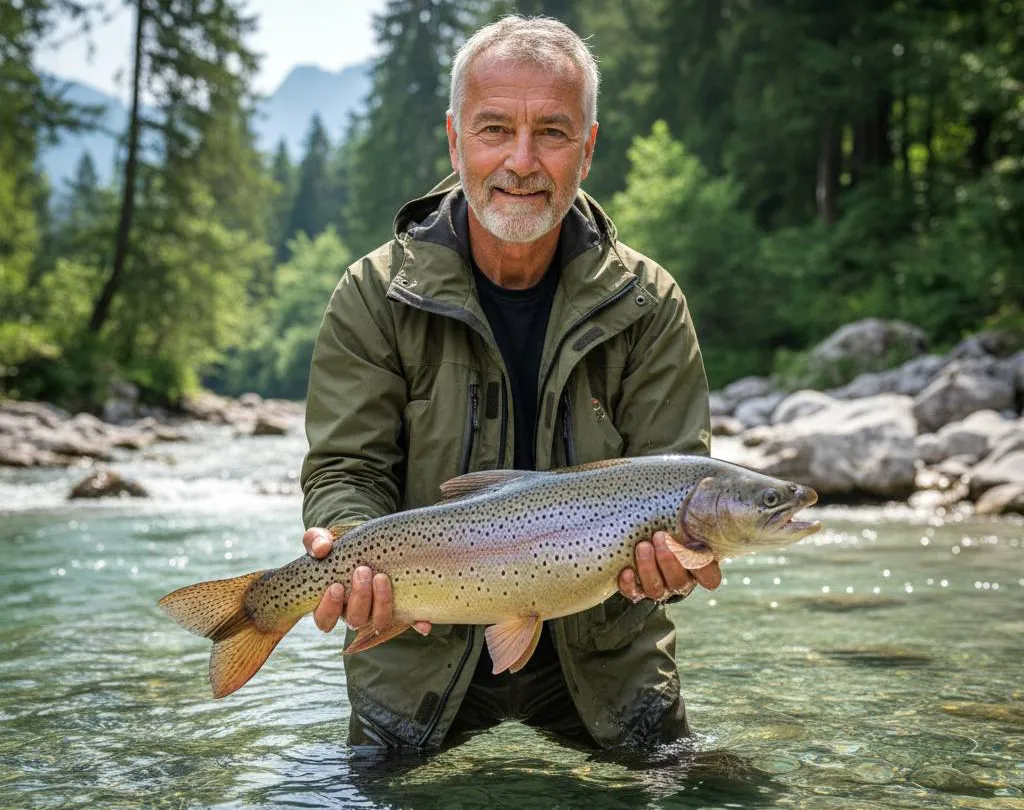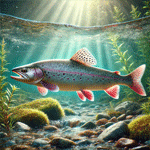🌊 European Grayling | mjeznik - Thymallus thymallus
Fish catch image post details @ SnimiRibu.com
Danes na Soči spet čarobni dan! Kapitalni lipan 48 cm na suho muho #16 (imitacija majske muhe). Borba kot iz učbenika, vsaka tresenje repa je bilo vredno vsake ure vezanja muh doma. Seveda takoj spuščen nazaj v tok – naj raste še naprej za naslednje generacije. Hvala Soči za še en nepozaben trenutek! 🪰💚 #catchandrelease #mušičarenje #Soča #lipan
📍 Soča (most pri Kobaridu)
🐟 Fish Species:
European Grayling
🔬 Latin name:
Thymallus thymallus
📍 Location of catch:
Soča (most pri Kobaridu)
🎣 Fishing method used:
Fly Fishing
suha muha, lagana palica #3, 6X predvez
suha muha, lagana palica #3, 6X predvez
🪝 Bait / Lure used:
Artificial Flies
ročno vezana suha muha (imita majske muhe)
ročno vezana suha muha (imita majske muhe)
🌤️ Weather / Water conditions:
Clear/Sunny
sončno, 18 °C, vodostaj nizak, kristalno čista voda, lahen veter z gore, popolni pogoji za suhe muhe – ribe so se dvigale kot nore!
sončno, 18 °C, vodostaj nizak, kristalno čista voda, lahen veter z gore, popolni pogoji za suhe muhe – ribe so se dvigale kot nore!
📏 Fish length (cm/in):
48.00 cm
⚖️ Fish weight (kg/lb):
1.35 kg

European Grayling
Thymallus thymallus
Physical Characteristics
Length: 30 cm (avg) / 60 cm (max)
Weight: 0.6 kg (avg) / 1.6 kg (max)
Habitat & Geography
Bodies of water:
Common Regions:
Behavior & Diet
Primary Diet:
Angling Information
Best Baits / Lures:
Methods & Techniques:
Best Fishing Season:
Classification:
Phylum: Chordata (Chordate)
Class: Ray-finned fish
Order: Salmon-like fish
Family: Thymallidae
Brief description
The European Grayling is a freshwater salmonid native to cold, clean rivers and lakes across Europe. Known for its striking sail-like dorsal fin and subtle iridescent coloration, it prefers well-oxygenated waters and feeds on insects, crustaceans, and small fish. It is a popular fly-fishing target and is protected in parts of its range due to habitat sensitivity and declining populations.

